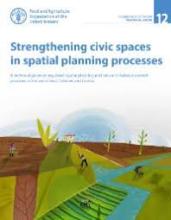Land Library Search
Through our robust search engine, you can search for any item of the over 73,000 highly curated resources in the Land Library.
If you would like to find an overview of what is possible, feel free to peruse the Search Guide.
/ library resources
Showing items 1 through 9 of 40.This study explores how local communities reflect on institutional frameworks and protected area governance in two national parks (NPs) with similar nature values in Estonia and Russia, and aims to understand the role of value systems in these interactions.
Combining socio-cultural valuations of ecosystem services with ecological and monetary assessments is critical to informing decision making with an integrative and multi-pronged approach.
A worldwide introduction of renewable energy has been required to reduce greenhouse gas emissions. Concomitantly, this has caused conflict between renewable energy development and local communities over landscape changes.
The accelerated development of new urban areas has an impact on changes in the spatial use and complexity of ecosystems.
This technical guide provides strategies on how to strengthen, protect and promote legitimate tenure rights in spatial planning processes at the local, regional and national levels.
Following the massive expansion of rubber plantations in China, considerable research has been conducted on the impact of these landscape changes. The general consensus is that there have been negative impacts on the environment and positive impacts on local economies.
This booklet presents both successes and challenges faced by the people of Sierra Leone, whose lives and livelihoods are dependent on their legitimate rights to own, farm, fish, build or develop an area of land or water.
The value of Traditional Ecological Knowledge (TEK) for informing resource management has long been recognized; however, its incorporation into ecosystem services (ES) assessments remains uncommon.
Understanding how individuals, communities, and populations vary in their vulnerability requires defining and identifying vulnerability with respect to a condition, and then developing robust methods to reliably measure vulnerability.







